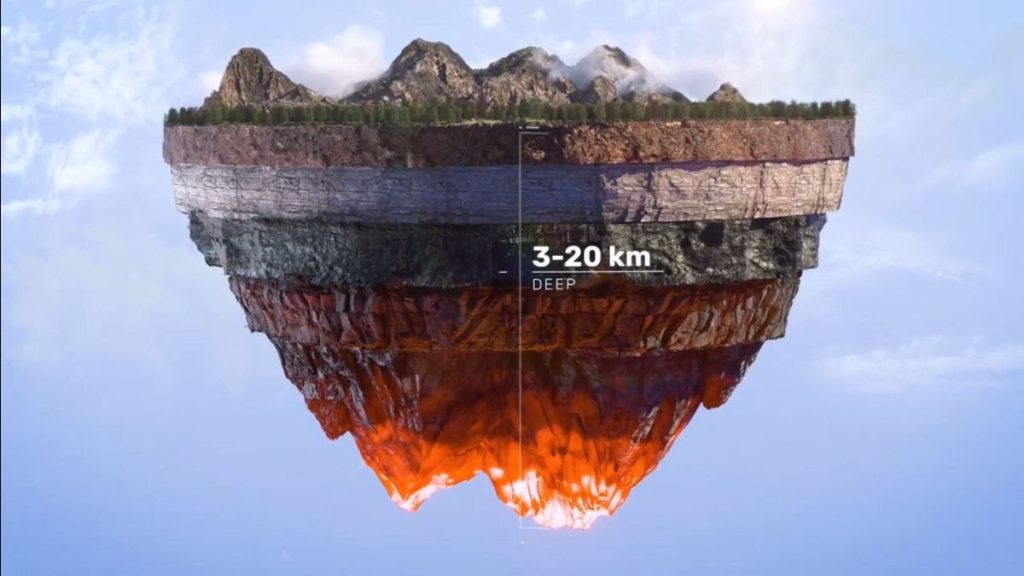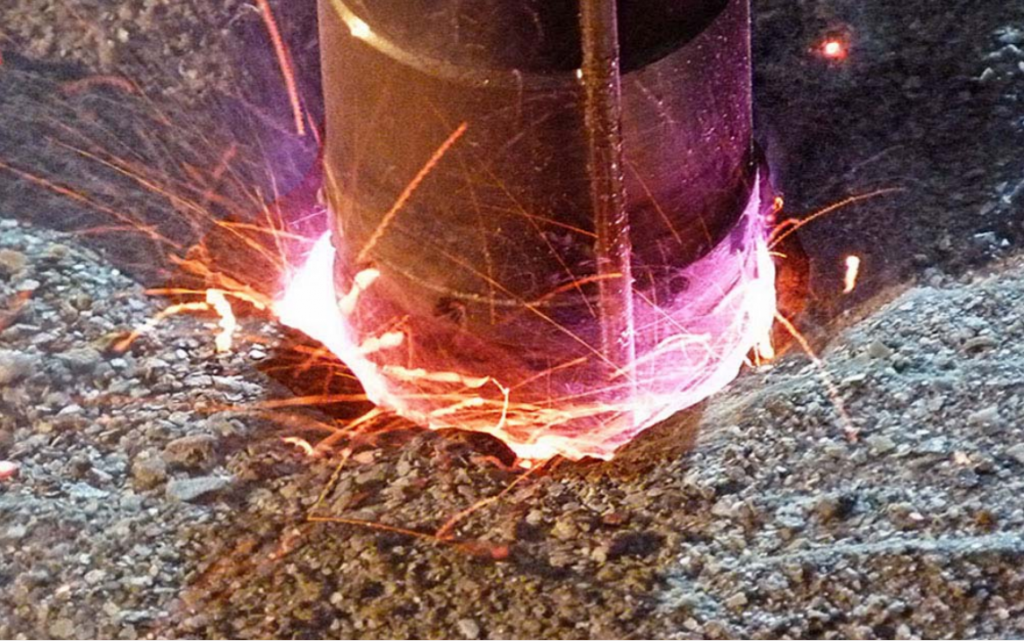
Courtesy of Quaise Energy
See More from ENERGYminute HERE
Geothermal technologies have been breaking new ground and touted as a key renewable source to balance out intermittent renewables like wind and solar.
- The problem is that geothermal currently makes up less than just 1 percent of electricity generation in the United States, and is generally confined to regions where very hot rocks are near the surface of the earth.
To become a major source of power, drilling technologies need to reach the hot rock 20 kilometers below our feet, where temperatures can reach 500oC. At that temperature, water turns “supercritical” and carries 5 to 10 times the energy of just regular old hot water.
The challenge: Current drilling technologies just can’t handle the heat and pressure that deep.
- The deepest hole ever drilled was the Kola well, which only made it down about 12 kilometers.
But several companies are working on it using some novel techniques, let’s take a look.
The Challengers:
Quaise Energy‘s technology makes use of a gyrotron to create millimeter waves which are harnessed to vaporize rock which can then be brought up to the surface.
- Think of these millimeter waves like cousins to the microwave. Microwaves turn hot pockets from frozen cakes to scorching hot snacks by vibrating water molecules up and down so that they heat up.
Just remember “Quaise does to the Earth, what your microwave does to pizza pockets.”
Geothermal Anywhere Drilling is similar to Quaise, but employ their own PLASMABIT technology.
- PLASMABIT creates an electrically charged gas known as plasma, which is hot enough to disintegrate any rock in its path.
- The plasma at the front of the tool means that the drill itself doesn’t come into contact with the rock, which should drastically reduce maintenance costs.
- It can also penetrate hard rocks much faster meaning drilling costs don’t have to go up exponentially the deeper down you get.
Both companies have designed platforms that integrate and make use of existing conventional drilling. Currently, each are seeking partnerships within the oil and gas industries to jump-start their tech. So if you know someone…

Courtesy of URSI
Hypersciences has combined technologies from the drilling and aerospace sectors to produce a ramjet in a pipe, allowing for projectiles to be accelerated at hypersonic speeds down a borehole.
- These projectiles slam – at around Mach 5 – into the rock just ahead of the drill bit, and can be fired several times per minute. This kinetic impact pulverizes the rock ahead of the drill bit allowing the now powdered rock to be circulated out with the drilling mud.
- On their FAQ they specifically state that it is not like drilling with a gun because of how the acceleration happens. But just between us, it’s basically drilling with a gun.
Hypersciences is also working on live field testing, and have partnered with the likes of Shell and NASA. The company plans to apply their technology not only to drilling, but for boring tunnels and launching projectiles into space, as well.
Zoom out: This type of technology could be a holy grail of sorts. It would allow the development of baseload renewable energy, which does not suffer from the intermittency problems of solar or wind.
See More from ENERGYminute HERE
Share This:




 CDN NEWS |
CDN NEWS |  US NEWS
US NEWS 




























COMMENTARY: Markets Call Trump’s Bluff on Russian Oil Sanctions in Increasingly Risky Game – Bousso